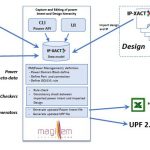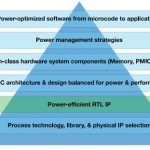You are currently viewing SemiWiki as a guest which gives you limited access to the site. To view blog comments and experience other SemiWiki features you must be a registered member. Registration is fast, simple, and absolutely free so please,
join our community today!
Register For This Web Seminar
Online – Jun 29, 2020
9:00 AM – 10:00 AM US/Pacific
Online – Jun 29, 2020
5:00 PM – 6:00 PM US/Pacific
Overview
Mentor will highlight our Tanner Digital Implementer (TDI) tool, powered by the Oasys Digital Synthesis and Nitro Place and Route engines, and
…
Read More
I had the opportunity to preview an upcoming webinar from Synopsys on SoC Glitch Power – what it is and how to reduce it. There is some eye-opening information in this webinar. Glitch power is a bigger problem than you may think and Synopsys has some excellent strategies to help reduce the problem. The webinar is available via replay… Read More
Register For This Web Seminar
Online – Jun 29, 2020
9:00 AM – 10:00 AM US/Pacific
Online – Jun 29, 2020
5:00 PM – 6:00 PM US/Pacific
Overview
Mentor will highlight our Tanner Digital Implementer (TDI) tool, powered by the Oasys Digital Synthesis and Nitro Place and Route engines, and
…
Read More
We already know that IP-Xact is extremely useful for managing IP and SOC design specifications, yet it may come as a surprise to learn that it also can be used to form the basis of a power flow too. There are design tools that read UPF to help implement and verify designs, however it can be extremely useful to understand the interplay … Read More
For any given design objective, there is what we in the design automation biz preach that design teams should do, and then there’s what designs teams actually do. For some domains, the gap between these two may be larger than others, but we more or less assume that methodologies which have been around for years and are considered to… Read More
You can save a lot of power in a design by gating clocks. For much of the time in a complex multi-function design, many (often most) of the clocks are toggling registers whose input values aren’t changing. Which means that those toggles are changing nothing functionally yet they are still burning power. Why not turn off those clock… Read More
For the devices we build today, design and implementation are unavoidably entangled. Design for low-power, test, reuse and optimized layout are no longer possible without taking implementation factors into account in design, and vice-versa. But design teams can’t afford to iterate indefinitely between these phases, so they… Read More
As you all know I am a big fan of the ASIC business model. It was critical in the transformation of the fabless semiconductor industry and still plays a critical part in our success. In fact, the ASIC business model is leading the way for systems companies to make their own chips. Remember, Apple started with the ASIC business model … Read More
ARM has become such a worldwide powerhouse in delivering processors to the semiconductor IP market because they have done so many things well: IP licensing model, variety, performance, and low-power. On my desk are two devices with ARM IP, a Samsung Galaxy Note 4 smart phone and a Google tablet. Most of my readers will likely have… Read More
How do you ensure your design has been optimized for power, performance, and area? I posed this question to Mentor’s Group Director of Marketing, Sudhakar Jilla and product specialist Mark Le. They said that finding the PPA sweet spot is still often done by trial and error – basically serial experiments with various input parameters… Read More







